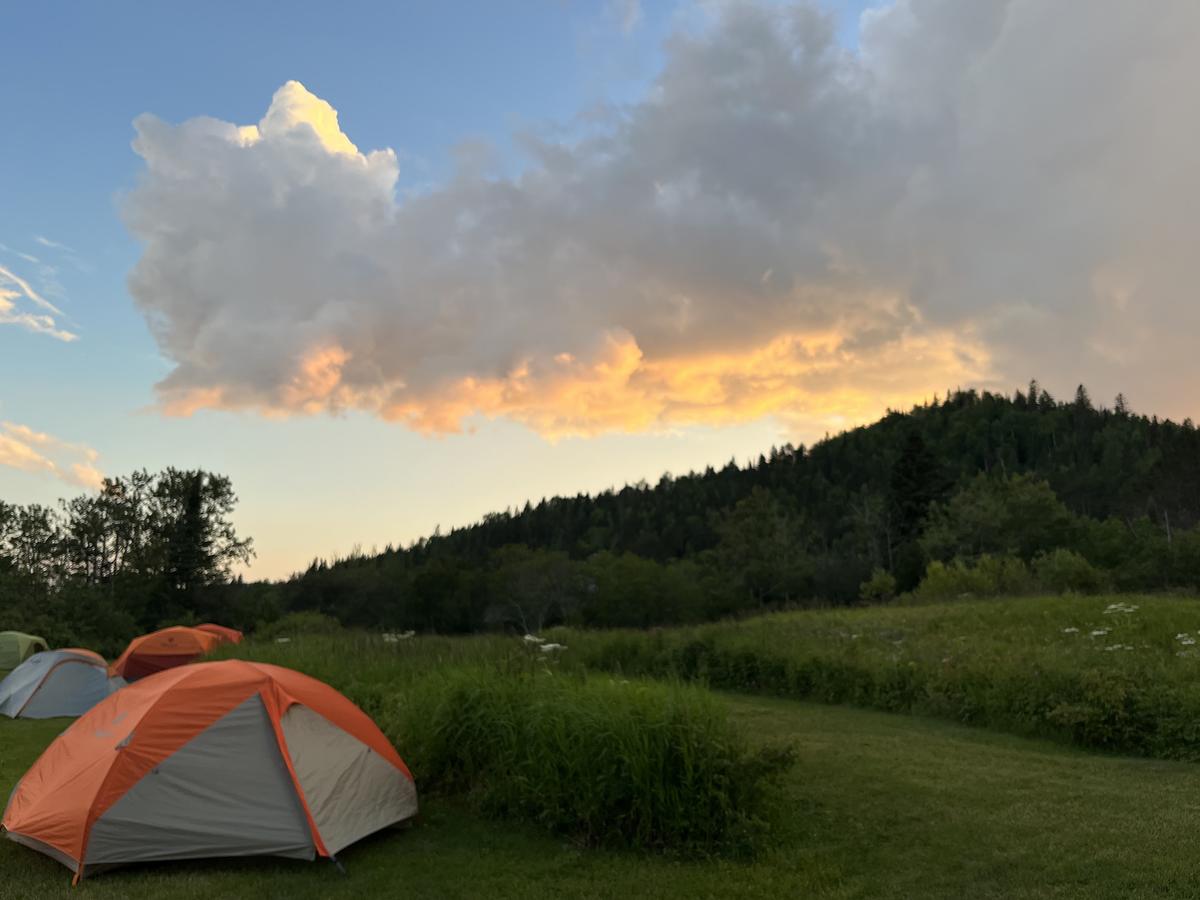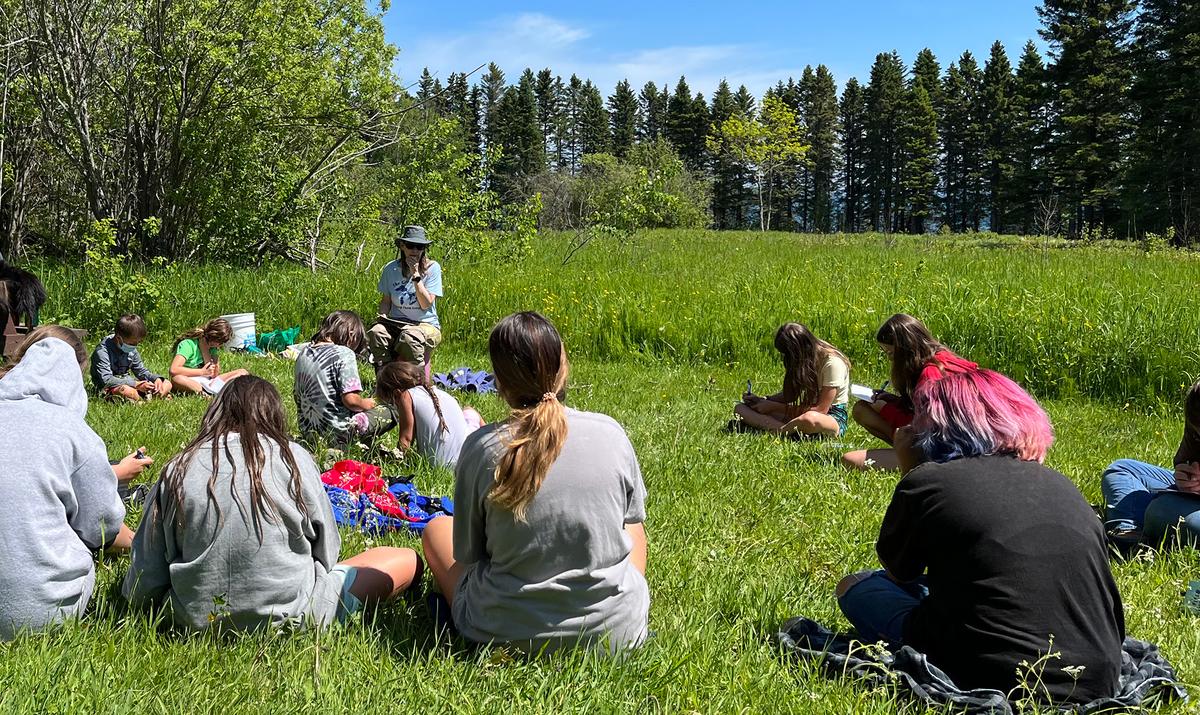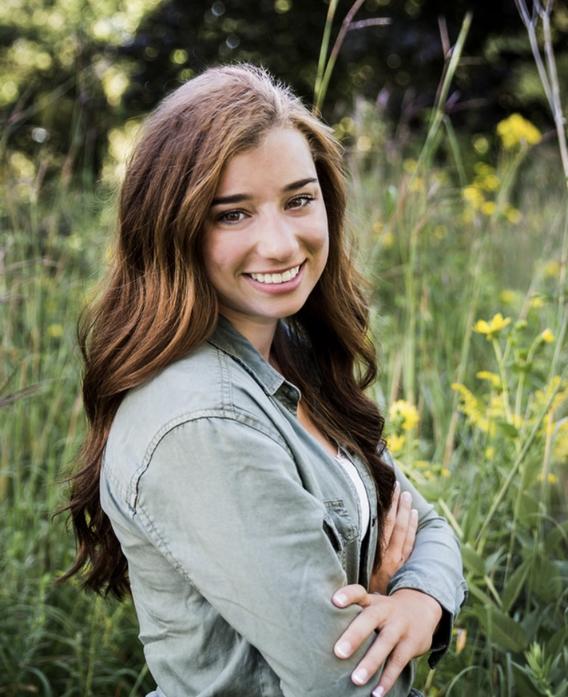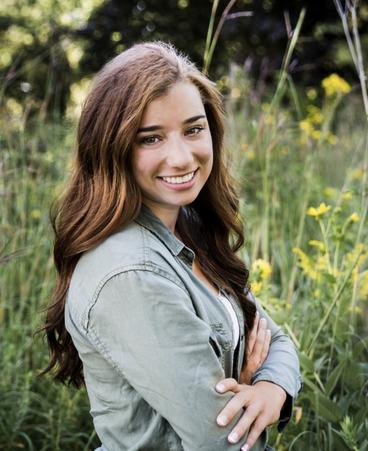
This month’s extension column is by Minnesota Sea Grant (MNSG) undergraduate intern Megan Gilles who writes about a MNSG environmental literacy project designed to teach youth about nature and science in an outdoor setting.

Story time at the 2022 Agaaming Aki event. Minnesota Sea Grant Extension Educator Marte Kitson reads a story to the event participants.
My name is Megan Gilles and I am an undergraduate extension education intern working with Minnesota Sea Grant (MNSG). This summer I traveled to Grand Portage, Minnesota, to help deliver an environmental literacy program about streams and the food webs of stream ecosystems at a week-long camp for tribal youth. The camp was called Agaaming Aki (i.e., “the land across the water”).
Youth from Grand Portage, Minnesota, hosted peers from Bois Forte and Fond du Lac Tribal and Community College's youth outreach program called Gidakiimanaaniwigamig for two separate Agaaming Aki events. Agaaming Aki events are week-long overnight camping experiences for tribal youth in Grand Portage, Minnesota. Participants had the opportunity to engage in science-based programming through hands-on experiences, witness an Ojibwe/Dakota star story presentation, craft with community members, and hear about natural resource management career opportunities.
The event ran from July 18 through July 22, 2022, and I accompanied Marte Kitson, MNSG environmental literacy extension educator, as we demonstrated the interconnectedness of terrestrial and aquatic environments.
We started the week with an activity called Fish on Trees. Marte and I soaked mesh bags filled with leaves in a stream for three weeks prior to the camp. The campers helped us remove the bags from the stream and they picked apart the leaf bags to see what insects were inside. We were looking for macroinvertebrates — insects in their nymph and larval stages that don’t have a backbone, but are large enough to see without a microscope. Many of the tiny creatures the campers found were macroinvertebrates.
Macroinvertebrates in a waterbody can serve as water-quality indicators. According to the EPA, waterbodies in healthy biological condition support a wide variety and high number of macroinvertebrates. Bacteria that grow on leaves, like the leaves we collected in the leaf packs, can feed larvae, which can feed smaller fish, which can feed bigger fish, which can end up in our stomachs. That’s why we say, ‘fish grow on trees!’
During a community fish fry and lacrosse game during the week-long event, campers said they better understood how aquatic food webs are related to the land and themselves. They said they realized how the energy that began in a leaf provided them with energy to play lacrosse. The activity was a great demonstration of how life on land helps to sustain the aquatic community in a Great Lakes watershed.
After the Fish Grow on Trees activity, Marte and I led a game called predator-prey, which is a land-based example of terrestrial interconnectedness. Campers were divided into teams of herbivores (moose, which eat only plants), omnivores (black bears, which eat plants and meat), and carnivores (wolves, which eat mostly meat). The goal of the game was for each team to gather food for their team and avoid being eaten. Throughout the game, campers were encouraged to visualize how different species might interact with each other. Some of the campers’ survival tactics mirrored strategies used by animals in the wild, such as a lone wolf hiding behind a tree to ambush a moose, or the moose team traveling together as a herd for protection against the carnivores. Campers said they learned that everything is connected, whether in the water or on the land.
I learned in my extension internship with MNSG that there are many teaching opportunities in the education field outside of a classroom. My internship involved interacting with a wide range of audiences, from the campers at Agaaming Aki to teachers from around the Great Lakes region. Because MNSG provides teachers with professional development experiences and educational tools that help them deliver Great Lakes curriculum to their students, I viewed some of my internship as a behind-the-scenes look at education. I enjoyed working with both formal and informal educators who are passionate about what they do. They inspire me to continue a career path in education and pursue a degree in secondary education. Overall, I have gained valuable experience and skills with MNSG that will help me find success in my future career.
For more information go to MNSG's Education Resources webpages or contact MNSG Extension Educator Marte Kitson.
Minnesota Sea Grant monthly newsletter:
Sign up to receive Minnesota Sea Grant’s monthly program highlights newsletter to stay in the loop about all our community projects.

